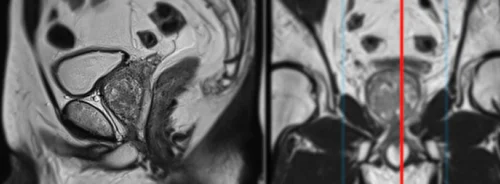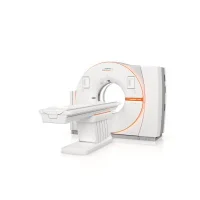Facilitating decisions using vast amounts of comparative data – AI can do this, but creating the algorithms is a complex and lengthy process. Yet it can make a difference, especially in lung cancer care.



The lack of early symptoms and the aggressive progression of lung cancer make it one of the deadliest types of cancer.[1] Individually adapted diagnostics and subsequent therapy are therefore crucial to providing patients with the best possible care. Innovative algorithms can assist doctors on this path of decision-making.
Cancer care: Targeted interventions using AI

To make decisions about which diagnostic and therapeutic measures are right for a given disease stage, vast amounts of data need to be collected.

Software platforms can bring together anonymized patient data, the latest medical guidelines, and the latest medical knowledge. This compiled information can be evaluated and analyzed by algorithms to find patterns in the large amounts of health data.

Based on this, doctors would be able to give patients highly individualized advice, from early detection and diagnostics to customized therapy and follow-up treatment.
Lung cancer patients in particular could benefit from the interpretation of large amounts of data. What happens after a lung cancer diagnosis? Chemotherapy, radiotherapy, or surgery? There are many options, and they all depend on the patient’s individual condition and the stage of the disease itself. Especially in the case of lung cancer, however, the disease is often already advanced when patients present with symptoms. Lung tissue is insensitive to pain, so tumors only cause discomfort when they grow into neighboring tissue and lead to problems such as pressing pain in the chest area, difficulty swallowing, persistent hoarseness, or joint and bone pain.[3] By then, tumors have often exceeded a critical size or have developed metastases – in other words, tumor cells have spread via the blood or lymph. To give patients a better outlook after diagnosis in the future, patterns in comparative data sets from other patients are now repeatedly consulted. The idea is to help doctors in their diagnostic and therapeutic decisions. However, creating the necessary algorithms is very time-consuming because so many different parameters and data play a role in the interpretation and evaluation. In the following, we explain how this kind of algorithm is developed and what it should be able to do in the future.
Source: Siemens Healthineers
Latest Articles
Lung Cancer, AI, Artifical Intelligence, Cancer care, Siemens Healthineers, Siemens
Facilitating decisions using vast amounts of comparative data – AI can do this, but creating the algorithms is a complex and lengthy process. Yet it can make a difference, especially in lung cancer care.










